Gigabyte Z68X-UD3H-B3 Review
by Brendan van Varik on July 11, 2011 7:01 AM EST- Posted in
- Gigabyte
- Motherboards
- Sandy Bridge
- Z68
Note: There is a pretty big issue with the shipping (F2) BIOS on the board I received. If any memory settings were chosen (including XMP) rather than left at auto, the board would not engage more than a 1x turbo mode, even in single threaded performance. This issue has been addressed, and Gigabyte suggest that users upgrade to the latest BIOS, available from their website.
The Touch BIOS – no Graphical UEFI
Gigabyte have yet to adopt a full graphical UEFI BIOS. In fact, they merely have a “hybrid” BIOS which adds support for 2.2TB+ hard drives. In order for the 2.2TB+ hard drives to be detected, you have to ‘activate’ them within Windows. You have to run a program to initialize the drives. For the rest, the layout is exactly like a five year old Gigabyte board I have laying around from the LGA775 age.
Unfortunately, this is about as interesting as it gets. It’s a shame that Gigabyte have yet to take on a full UEFI style but it may come in the not too distant future. On the plus side however, Gigabyte have put all of the features in their relative submenus that makes them easy to find. For example, all of the system clocks and overclocking features are located in the MB Intelligent Tweaker (M.I.T.) menu and the settings are under their respective menus in there too. This is relevant for all of the menus within this BIOS.
There are no options to change any of the system fan speeds within the BIOS. However, scrolling down in the PC Health Status part of the BIOS reveals a few options for the CPU fan control. When you select CPU Smart FAN Control and enable it, you can alter the CPU Smart FAN Mode. You can either let it automatically adjust the voltage of the fan or you can manually assign it. If you have a 3 pin fan, you can alter the voltage which will correspond to the speed of the fan or if you have a 4 pin fan, you can set it to PWM mode and the BIOS will take care of it for you. There are four different options which you can choose from whilst using the PWM function. They consist of Normal, Silent, Manual and Disabled.
The TOUCH BIOS from within Windows
Above is the software, which you can use to change absolutely everything in the BIOS from within Windows.
The only obvious issue I found with it is in the M.I.T Status section of this software. It only registers one DIMM no matter which slot it is in but it does register that you are using the correct amount of RAM which is slightly odd.
Overclocking
Just like other manufacturers, Gigabyte have their own software which allows you to overclock your system automatically from within the OS. However, they all vary and some do better than others. We tested out Gigabytes’ offerings before we fiddled and tweaked within the BIOS.
When the EasyTune6 software loads, it loads the Tuner menu by default. There are three different “Quick Boost” options you can choose which consist of a 3.6, 3.8 and 4.1GHz core speed and are labeled 1, 2 and 3 respectively. All three options were tested and proven stable but I will write about the level 3 variable. There are a few things to note here. The voltages set are far too high for the clock speed. A core voltage of 1.4v is set. This particular CPU only requires 1.34v for 4.3GHz. This means there will be excess heat which could be avoided by using less voltage. No Load Line Calibration (LLC) is set during this overclocking procedure, which means the voltage droops to 1.33v when the CPU is highly stressed.
Thankfully, on the RAM side of things it does a little better. The RAM is set to 1866MHz with X.M.P timings and voltages. Our RAM is rated at 2000MHz which isn’t available for selection in the BIOS. There are two options – either 2133MHz or 1866MHz. The safer choice of 1866MHz was chosen to try and eliminate any possible RAM stability issues.
Unfortunately, the CPU core voltage isn’t displayed correctly by CPUZ which means you have to use the EasyTune6 software, which seems to do a better job although I wouldn’t rely on it entirely. The vDroop on this board is something which needs to be addressed. In the BIOS, there are ten levels of LLC, one being the weakest and ten being the strongest. There is no description in the BIOS of how they affect the voltage. When you use no LLC at all, the vDroop on 1.4v can dip right down to 1.33v which is a significant change in voltage. However, when you use level 5, so in the middle of min and max, it will increase the voltage to 1.45v which is far too much again. Gigabyte really do need to sort this out.
Given that the EasyTune6 software only offers a 4.1GHz overclock which uses too much voltage, I was eager to get on and see how well the motherboard overclocks if you set the speeds and voltages on your own accord.
First of all, I tested to see if the CPU would be stable at 4.3GHz with 1.34v just like it is in other motherboard testing. It was semi stable; LLC had to be set to level 3 in order to obtain complete stability. The voltages peaked at 1.36v which isn’t too serious.
After deciding it was stable enough, I pushed on and attempted to find the highest clock speed which could be used to run our benchmarks. The maximum overclock achieved was 102.1x47 which isn’t too shabby at all. The BCLK isn’t as impressive as other motherboards but as you have an unlocked multiplier, you might as well just take advantage of it instead of messing around with the BCLK.
When you push the overclock a touch too far, it sometimes fails to recover from a bad OC without manually simulating the boot cycles. By this, I mean turning the PC on and off by the PSU and letting the board power itself back on. It only takes a few attempts. The motherboard is designed to copy data from the secondary BIOS chip to the first one when the overclock fails in order to recover itself. All this does is restore the BIOS defaults which allows you to either try again or try something different.


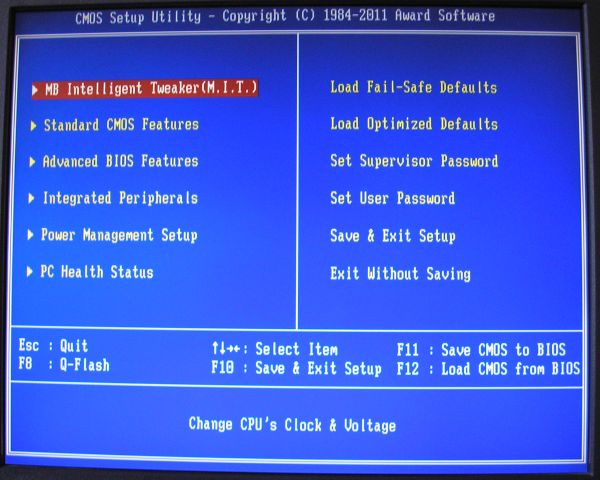
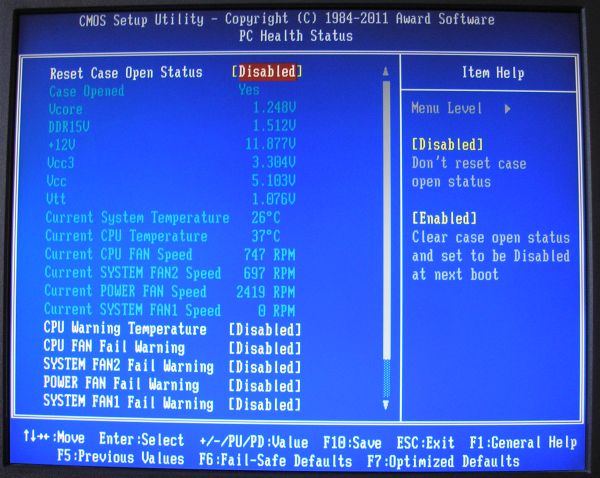






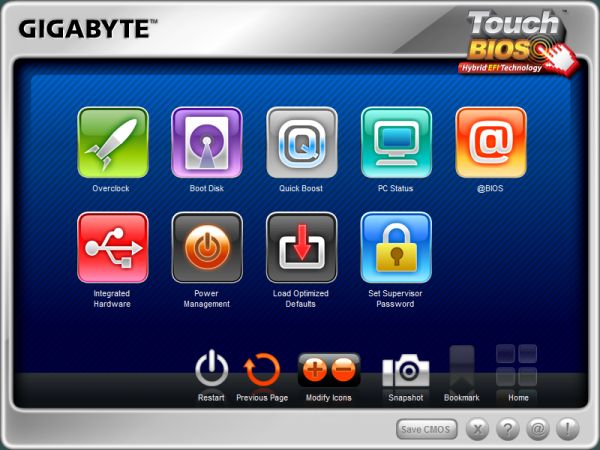
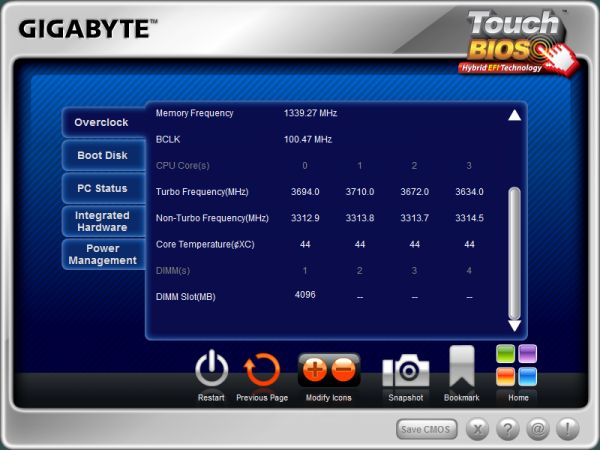
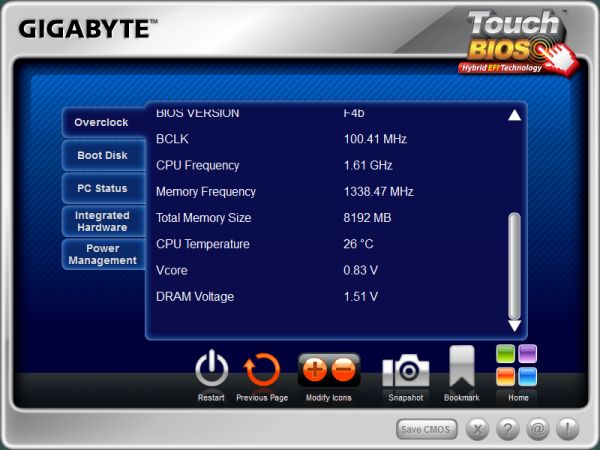














70 Comments
View All Comments
kamiyo - Tuesday, July 12, 2011 - link
hopefully this will inspire me to upgrade the rest of my rigbas94041 - Tuesday, July 12, 2011 - link
Why do reviews such as this ignore that which is fundamental to product quality?Namely, Customer Support.
I will never purchase another Gigabyte product as in my experience their support is incompetent and unprofessional.
Until these tech companies are called out on it they will continue to provide abysmal support. Product reviews should provide a measure of tech support capacity just as they measure a products technical features.
just4U - Tuesday, July 12, 2011 - link
I've played with this board and it's little cousin, the GA-Z68MA-D2H-B3. I've found that both boards are a little quirky almost as though the bios versions are not quite mature. Small little nagging things that are hard to pin down.The SSD Caching is an interesting feature. I don't notice a big improvement but it's there for sure... even though the Windows 7 Experience index doesn't show it. If you change hardware frequently then you run into issues as well (or I have anyway) forcing you into the setup utility to disable the cache drive and reset it back up after the fact. Things have gotten better since the last bios update but... not quite there yet. (imo)
The0ne - Tuesday, July 12, 2011 - link
No gimmick, just a great show if you are interested. For the linguist or anyone interested in words and such, the program runs every week on the weekends. I highly recommend it as I listen to them weekly.http://www.waywordradio.org/
Hope you enjoy them as much as I do :D
henhaohenhao - Wednesday, July 13, 2011 - link
Come go and see, will not regret it Oh look
http://www.ifancyshop.com
henhaohenhao - Wednesday, July 13, 2011 - link
Come go and see, will not regret it Oh look
http://www.ifancyshop.com
Diagrafeas - Saturday, July 16, 2011 - link
This is from the manual."Please note the HDMI audio output only supports AC3, DTS and 2-channel-LPCM formats."
Is this correct?
What about 8-channel LPCM, Dolby TrueHD bitstream, DTS-HD Master Audio bitstream?
goodzhang - Sunday, July 17, 2011 - link
Come go and see, will not regret it Oh lookhttp://www.ifancyshop.com
catchmyevo - Monday, July 25, 2011 - link
Brendan,Thank you for posting an article for this Motherboard, as it made my decision to buy it. One thing though, I wasn't sure if you had come across this but after upgrading the BIOS from F2 to F4, the option to set ACPI Suspend Type S1(POS)/S3(STR) disappeared. Any ideas as to why they would make a change to fix some issues, but removed a feature that's printed in their manual?
Conditioned - Wednesday, July 27, 2011 - link
First review I read of a motherboard that gives dpc. Thats so great for us who play (and ofc for those that do audio processing).For the next review I would like to know:
Was the system under load as you took those dpc measurements? Listening to music, harddisk usage, anything loading the cpu?
Was it in 'idle' mode or was it 'clocked' up?
Where sounddrivers installed? Which ones.
Was hpet on or off?
What nic (model and driver version).
What intel inf version.
I wonder at these numbers cause I have ~60 microseconds in dpc with my msi z68 gd80.
I have done two things to lower dpc:
1) Install brainbits low dpc drivers for my Asus essence
2) I have timerresolution.exe running which increases the dpc timer resolution thereby possibly decreasing dpc somewhat.